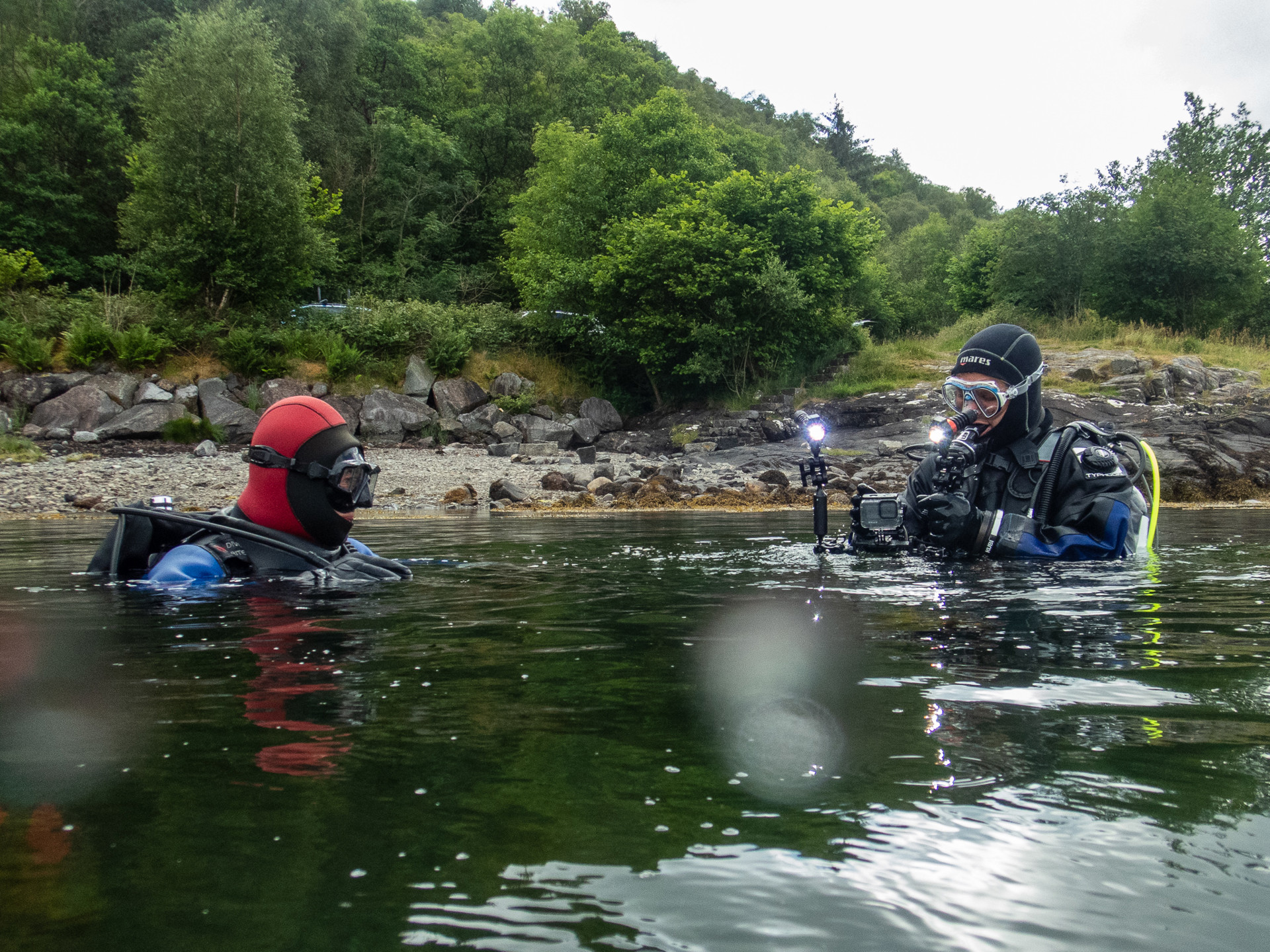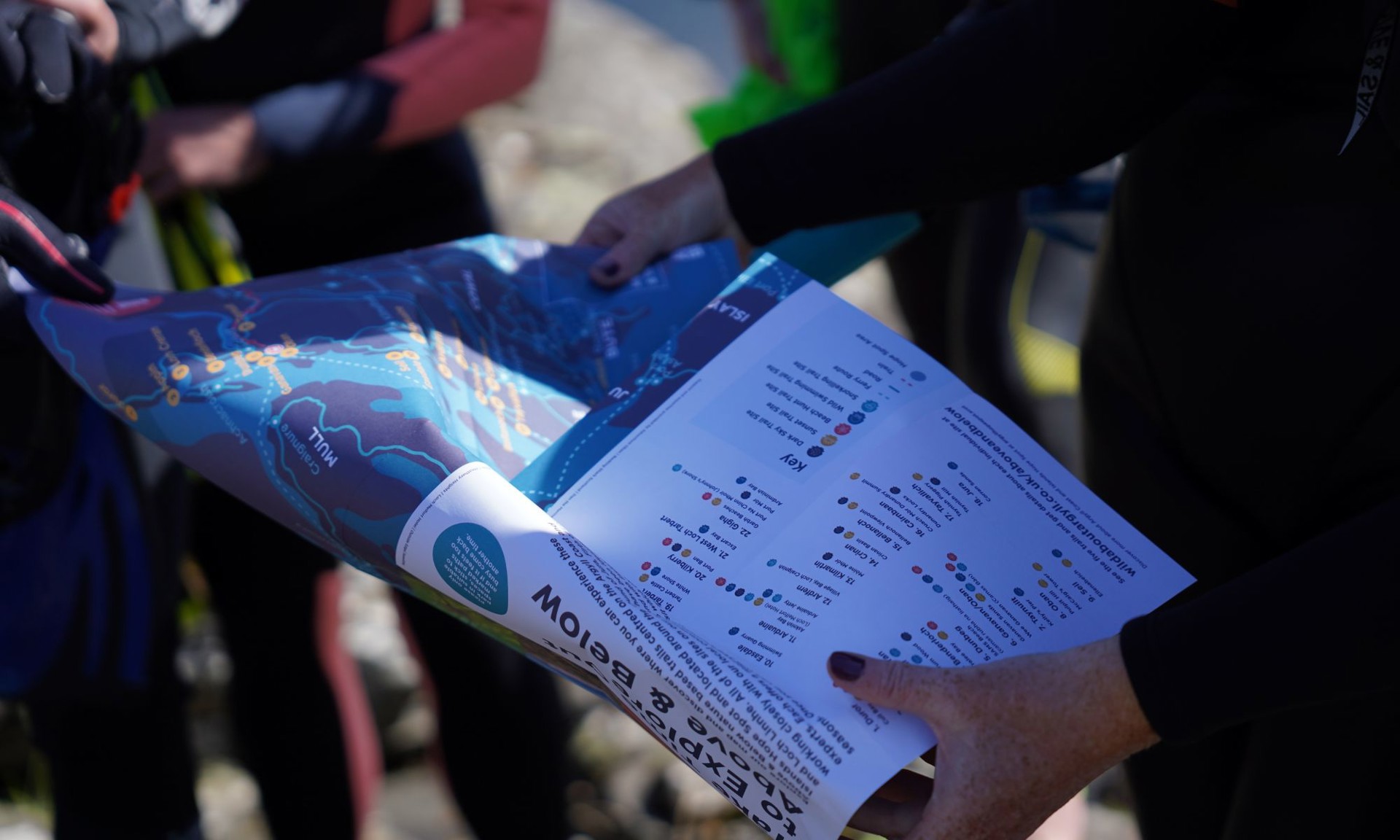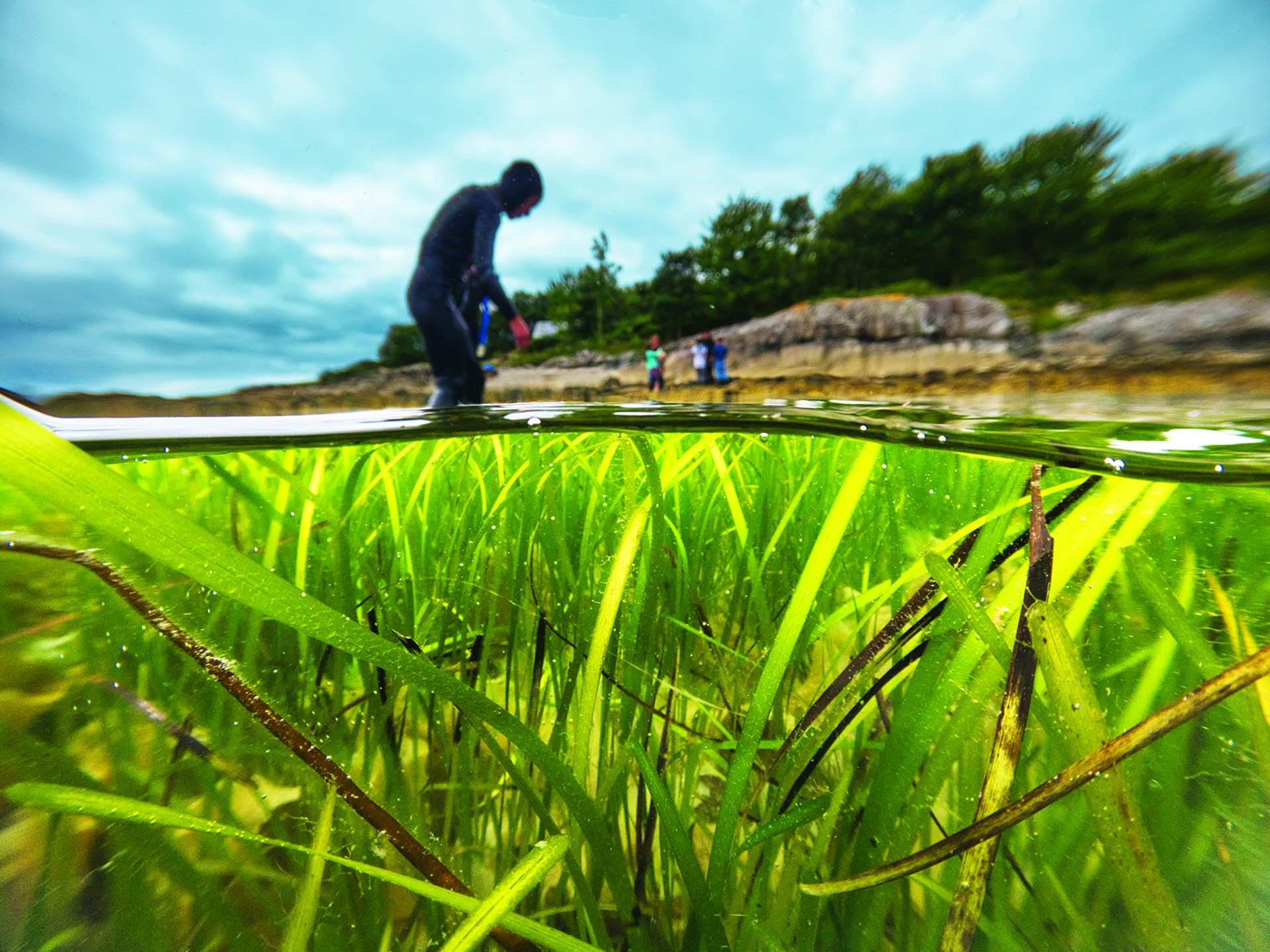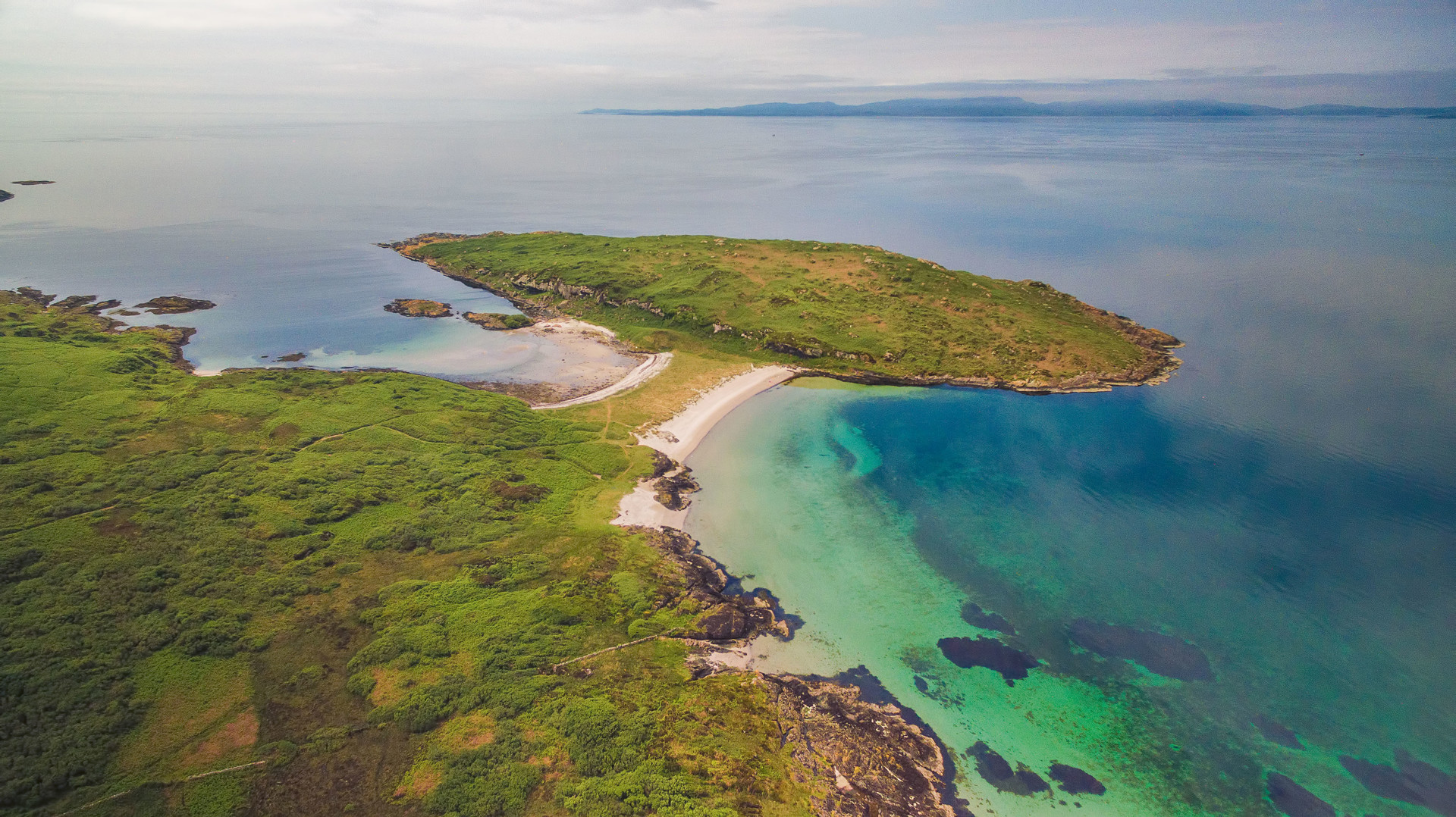
The best spots for Scuba Diving in Scotland
SCUBA Diving is a popular specialist activity in the waters of Argyll & the Isles - and it’s easy to see why with some of the best SCUBA spots in Scotland. Think sheltered bays, glittering sea lochs and fascinating accessible wrecks. All just a stone’s throw from the hustle and bustle of Glasgow.
With 3,723KM of coastline, 32 inhabited islands and over 40 lochs, Argyll’s west coast waters are a SCUBA diver’s paradise. This is a very special marine area. Special because it has several international marine conservation designations and the UK's first Hope Spot. The Hope Spot is an area around the Sound of Jura, Firth of Lorn, Sound of Mull and Loch Linnhe which is teeming in biodiversity – explore serpulid reefs, kelp forests and wrecks that have formed artificial reefs.
The waters are (relatively!) warm from the Gulfstream and they are often crystal clear. There’s something for every diving enthusiast - gentle scenic dives, intriguing wreck explorations and challenging drift dives with strong tidal flows and deep drop offs. You can even enjoy blackwater and floodlit night diving.
Dive like an Argyll local with our recommendations for the best spots.
Why try Scuba Diving?
SCUBA diving is not a sport that you can just try on holiday - you need to take lessons and become certified.
It’s worth it though. SCUBA diving opens up a whole new world of underwater wonder where you can get up close to the flora and fauna of the oceans. Some describe SCUBA diving as like visiting a colourful living museum.
SCUBA Diving is an incredible way to explore under the water but it’s not without risk. Sadly, there are diving fatalities every year in UK waters and even experienced divers can run into difficulties. Minimise the risks by following these snorkelling safety tips from the RNLI.
We strongly recommend reading the RNLI SCUBA Diving Safety Summary.
Safety first!
- Be fit to dive - prepare yourself by being fit to dive – cold water will put extra strain on your body. Always consider your cardiac health before diving and get any concerns checked out.
- Check your diving equipment at the start of the season make sure all your diving gear is in service and ready for another year’s diving.
- Plan your dives - check the weather and tides.
Always complete a buddy check. No matter how experienced you are, or however many times you have dived with your buddy, don’t skip the buddy check. It could save your life, and theirs. - Be spotted. All divers should carry a surface marker buoy or delayed surface marker buoy on every dive to aid their visibility to all surface craft.
- Carry a means of calling for help. If something goes wrong, how will you call for help? Consider carrying a personal locator beacon or similar device in a waterproof canister.
Best Scuba Diving Spots in Argyll
Local RecommendationsLoch diving
Loch Fyne
The sheltered waters of Loch Fyne offer an abundance of wildlife. Spot colonies of anemones, different species of starfish, hermit crabs and moon jellyfish. Bob your head above the water and you are likely to see seals and possibly dolphins.
Loch Long
Dive next to the Finnart Oil Terminal on the eastern shore of Loch Long, about two miles north of Garelochhead, to see lots of different habitats created by the wreckage of the old pier. Look for sea orange sponge, sea cucumbers, plaice and peacock worms.
The Caves at Loch Long
With fabulous visibility and a complex underwater topography - with pinnacles close to the surface at low tide, Loch Long offers the opportunity to get up close to a rich variety of marine life.
Loch Creran
Loch Creran, a few miles north of Oban, offers a good variety of interesting dive sites. Many of the dives are accessible from the shore and conditions are generally sheltered. Explore serpulid reefs and horse mussel beds.
Ocean diving
The Firth of Lorn and Sound of Mull has many sites of interest, here are a some of the top spot;
- Dunollie Castle. Close to the shore of Oban, you can drift dive around the coastline next to the ruins of Dunollie Castle and spot colourful Deadman’s Fingers and Sunstars.
- Lochaline Pier and Calve Island. Calve Island is a spectacular cliff dive with stunning kelp beds providing a rich marine habitat. Lochaline Pier is a great wall dive, teeming with sea life. For divers bringing your own boats, there are plenty of launch sites. In addition, several dive boat operators run large hardboats taking up to 12 divers and smaller RIBs to the local dive sites.
- The Garvellachs. The ‘rough islands’ – lie close to the shore of Oban and offer spectacular dives down rock faces and pinnacles. The area has very strong tidal currents which peak in Corryvreckan – the world’s third largest whirlpool. This is a dive that should only be attempted by the fittest, most skilled, experienced and adventurous divers.
A little further south down the Kintyre peninsula, you can find more spots;
South Kintyre
The waters on the south coast of Kintyre of offer beautiful scenic and wreck dives. Most dives are relatively shallow (less then 20m) and much of the deeper waters have yet to be explored.
Penseorach Farm welcomes divers with a launch point for dive boats and a compressed air station.
Wreck diving
SS Breda, Oban
A casualty of bombing in 1940, SS Breda is one of the largest and most intact coastal wrecks in Scotland. The site is suitable for all divers with easy dives along the flat deck and penetration dives for experienced divers. There’s always plenty of marine life and the site is perfect for photography.
SS Meldon, South Mull
This stunning and intriguing wreck site is home to the steel ship SS Meldon which ran aground after hitting a mine. This artificial reef is teeming with life - including a resident otter! It is depth accessible and has consistently good visibility. With a max depth of around 15m the site can be enjoyed by novice and experienced divers alike. At low water, the wreck breaches the surface making it suitable for snorkelling.
Other wreck site
The Argyll mainland and the surrounding area has lots of wrecks to explore, including Madam Alice, Thesis, Apollo, Rondo and Hispania.
A full list of wreck sites can be found here.
Visitors to the area are often interested in the wreck of the Flying Boats. This is an incredibly challenging site and likely to be a war grave so private dives are not encouraged.
Closer to Glasgow, there are 20 wrecks within half an hour’s boat trip of the Holy Loch near Dunoon.
Scuba Diving FAQs
What is SCUBA Diving?
SCUBA diving is a sport in which you dive under the water to explore using a self-contained underwater breathing apparatus. You can SCUBA dive in most types of water including the oceans, seas and lochs.
Is SCUBA diving legal in Scotland?
Yes, the Scottish Outdoor Access Code allows you to roam and swim relatively freely in inland and coastal waters provided that you do so responsibly. This means it is legal to SCUBA dive in Argyll’s sea and lochs. It is important that you leave your vehicle in a sensible spot that isn’t causing an obstruction and that you access the water from open (not enclosed)land.
Is SCUBA diving safe?
No water-based activity is 100% safe and you should always have a healthy respect for the water.
You can minimise the risks by reading and following the safety advice provided by the British Sub Aqua Club, planning ahead and exercising caution at all times.
Never dive without taking lessons and attaining certification. Never SCUBA dive alone.
What equipment do I need?
As a minimum, you will need a wetsuit or dry suit and hood, mask, fins, snorkel and gloves plus your SCUBA (self contained breathing apparatus) which contains air - not pure oxygen. You can buy or hire this.
What is the difference between a wet suit and a dry suit?
A wet suit is made of neoprene and is not waterproof. It keeps you warm when wet It needs to fit well to be effective. A dry suit works by keeping the water out and trapping a layer of air to keep you warm. For Scottish waters, if diving into deeper waters or for extensive time periods, a dry suit is always recommended.
Can I SCUBA dive without lessons?
To be a safe, confident and self-reliant diver you will need to take lessons and become a certified SCUBA diver. No reputable operator will allow you to dive without this.
The clear, sheltered waters of Argyll & the Isles are very popular with people who have newly learnt to SCUBA dive.
Where can I hire kit?
You can hire kit from a few places locally. Some offer equipment only while others will only hire equipment as part of an organised activity.
Can I get compressed air in Argyll?
You can hire kit from a few places locally. Some offer equipment only while others will only hire equipment as part of an organised activity.
What do I do if I get intro trouble or see another SCUBA diver experiencing difficulties?
If you are underwater, use your personal locator beacon. If you are above the water, call the coastguard on: Call 999 or 112 and ask for the coastguard in an emergency. If you don’t have a signal, your phone will try to connect you to the nearest network.






